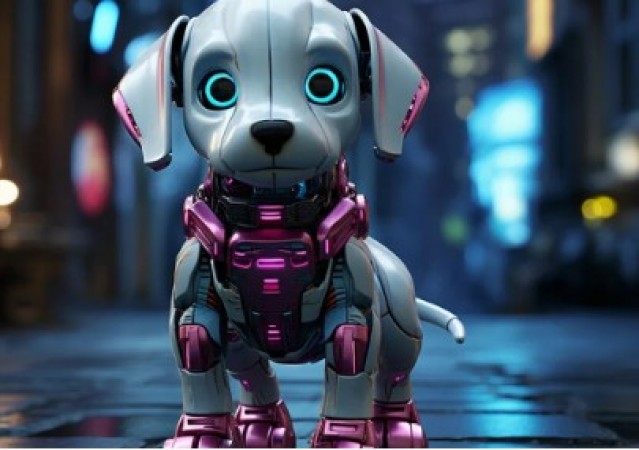
Advancements in artificial intelligence (AI) and robotics have paved the way for innovative solutions to assist individuals with disabilities. One such remarkable creation is the AI robot dog, designed specifically to aid the visually impaired in navigating their surroundings effectively. This article delves into the functionalities of these AI-powered companions, exploring how they interpret commands and assist the blind in their daily lives.
AI robot dogs serve as reliable guides, offering enhanced mobility and independence to individuals with visual impairments. These intelligent companions are equipped with sensors, cameras, and AI algorithms, enabling them to perceive and analyze their surroundings in real-time.
Through advanced mapping and navigation capabilities, AI robot dogs can assist the blind in safely traversing various environments. They can detect obstacles, identify obstacles' height and width, and guide users around them, ensuring a smooth and obstacle-free journey.
AI robot dogs facilitate interactive communication with their users through voice commands and tactile feedback. Users can issue commands verbally or via touch, and the robot dog responds accordingly, providing auditory cues or gentle nudges to convey information effectively.
Utilizing sophisticated voice recognition technology, AI robot dogs can understand and interpret verbal commands issued by their users. These commands encompass a wide range of actions, including directional instructions (e.g., "forward," "left," "right"), obstacle detection ("stop," "avoid"), and task-specific commands ("find the door," "locate the chair").
In addition to voice commands, AI robot dogs incorporate gesture and touch recognition capabilities to facilitate interaction with users. Individuals can communicate with their robot companions through simple gestures or tactile cues, such as tapping or stroking specific areas of the robot's body.
AI robot dogs leverage contextual understanding to interpret commands within the broader context of the user's environment and needs. By analyzing situational cues and user preferences, these intelligent companions can prioritize tasks, make decisions autonomously, and adapt their behavior accordingly to better assist their users.
Over time, AI robot dogs learn from their interactions with users and refine their responsiveness to commands. Through machine learning algorithms, these robotic companions continually improve their ability to understand users' preferences, anticipate their needs, and provide personalized assistance tailored to individual requirements.
The development of AI robot dogs represents a significant stride in leveraging technology to enhance the quality of life for individuals with visual impairments. As researchers and engineers continue to refine AI algorithms, improve sensory capabilities, and enhance user interfaces, the potential applications of AI assistance for the blind are boundless.
With ongoing advancements, AI robot dogs may evolve to offer even more sophisticated functionalities, such as real-time object recognition, environmental navigation optimization, and seamless integration with other smart devices and assistive technologies. By harnessing the power of AI and robotics, these innovative companions hold the promise of empowering the blind to navigate the world with greater confidence, independence, and dignity.
AI robot dogs represent a groundbreaking innovation in assistive technology, offering invaluable support and companionship to individuals with visual impairments. Through their advanced sensory capabilities, intuitive interfaces, and adaptive behavior, these intelligent companions serve as trusted guides, helping the blind navigate their surroundings with ease and confidence. As technology continues to evolve, the future holds immense potential for further enhancing the capabilities of AI assistance for the blind, ushering in an era of greater inclusivity, accessibility, and empowerment.
Major Boost for Karnataka: Air India, Tata Advanced Systems to Invest Rs 2,300 Cr, Create Jobs
Indian Navy Chief Inaugurates Nibe Defence and Aerospace Mfg Plant in Pune